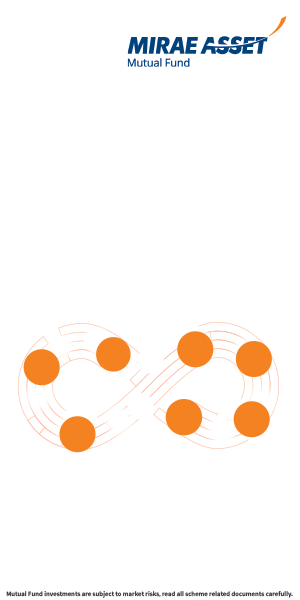Importance of Return on Capital Employed in Equity Investing

I have often heard my friends saying something like “a particular stock is a buy at 1200 and expensive at 1800”. I am sure many of you would have heard your friends and colleagues making similar statements. I get a sense that, many retail equity investors in India pay too much importance to price levels. Price levels are important, if you are short term trader or investor. But I have seen even investors who looking to buy and hold a stock for 2 – 3 years, betraying a short term mentality especially with respect to price levels. More informed investors look at valuations (P/E ratio). Couple of weeks back, a cousin asked me, whether a particular stock, let’s say X, was trading at a P/E of below 15 was a good buy because similar stocks in the same sector were trading near 20. In turn I asked him, before asking if X is a good buy at 15 P/E, should he not ask if X, itself, is a good buy.
We Indians love bargains, but should you not also look for quality? There are several metrics that can help investors identify good quality stocks. In this blog post, we will discuss one important metric, which mutual fund managers use to select stocks for their investment universe, Return on Capital Employed (ROCE).
Before we get into the discussion on Return on Capital Employed (ROCE), readers should understand one important point. Retail investors, whether they directly invest in equity shares or mutual funds, are minority shareholders. Minority shareholders should be concerned about two things, long term risks to their capital in the company and dilution of ownership. Let us understand both the concerns in more details.
The first one is fairly straightforward. You as minority shareholders have limited influence on how the promoters / managements run their companies. If the promoters / managements make bad decisions and the company makes losses, the share price will fall and your capital will get eroded.
Let us now, discuss the second concern, dilution of ownership. You may be thinking, why should you be concerned with dilution of ownership? After all, companies raise capital from time to time, either through debt or equity. I would not be concerned with dilution of ownership, as long as the enterprise value on a per share basis increases, or in very simple terms, I would be concerned as long as the share price of my stock increases.
However, there are number of scenarios when dilution of ownership is problematic for the minority shareholder. We will discuss a very simple case here. Suppose you have invested र 100,000 in a company, when its market capitalization was र 100 crores. In terms of ownership, therefore, you own 0.01% of the company. You may be thinking, what is the significance of owning 0.01% of the company? Since you are a minority shareholder, it simply means that you own a 0.01% of the profits after taxes (PAT) made by the company. Whether the management pays you dividend on the profits, or ploughs it back into the company to grow their profits further is their discretion, but irrespective of what they do you will get 0.01% of the profit, either through dividends or appreciation of the share price.
Let us assume the company makes a PAT of र 20 crores. It pays 50% of PAT as dividend and ploughs back the rest in the business. Therefore you got a dividend income of र 10,000. We will now discuss the problematic scenario.
Let us assume, for controllable or uncontrollable reasons, the revenue of the company falls by 50% and the company needs to invest र 50 crores simply to maintain its revenue for the next few years. How will the company get the funds to invest? Let us assume it raises र 50 crores through a public issue. For the sake of simplicity, let us assume the valuation of the company has not changed (in the more practical scenario the valuation would have fallen). Now the market cap of the company is र 150 crores. Your investment in the company’s shares was र 100,000. What will be your ownership percentage now? It will fall to 0.0067%. What is the financial impact of this?
Remember the company raised capital simply to maintain its revenue, so the PAT will not change. If next year’s PAT is still र 20 crores, what will be your dividend? It will be 0.0067% of र 10 crores (assuming a plowback ratio of 50%). Your dividend income will fall to र 6,700. There can be a number of other scenarios where dilution of ownership may have financial impact on minority shareholders, but we have seen that, if a company has to raise capital from time to time, not for growth, but simply to run it’s the business then the minority shareholders suffers.
Retail investors should know that, dilution of financial interest is not just caused by issue of fresh equity. It can also be caused by raising debt. Interest payments have seniority over dividend payments. In other words, if a company, that you are a shareholder of, raises capital through debt, it first has to pay the interest on the debt to its creditors. Dividends are distributed only after payment of interest and taxes. The impact on your dividend earnings will be of the same nature, as discussed in the example, if the company raised debt instead of fresh equity.
While the example discussed above, is purely illustrative, if you have followed the stock market in the last few years, you would know that shareholder of many companies across a number of sectors in India, like real estate, infrastructure etc are facing problems of the same nature that we have simplistically discussed in the above example. Good fund managers invest in companies that are self sustainable.
Self sustaining companies, as the name suggests, do not need to raise funds (debt or equity) to run their business. If they raise funds at all, it is to fund expansion projects, which in turn increases earnings (PAT) and hence the value of the company, resulting in higher value to shareholders. Many good companies actually fund expansion projects, either partially or even fully through their free cash flows. Many good fund managers believe that these are the best companies to invest in. So how do the fund managers identify companies that are self sustainable? Return on capital employed is a very useful metric in good stock selection.
For benefit of all readers, we will try to keep the rest of the post, as simple as we can, but we will touch upon some financial and accounting technical aspects, in the interest of readers who are interested in such aspects. However, if you find some of the technical aspects, simply skip over it and focus on the concept of ROCE and how it is used.
What is Return on Capital Employed (ROCE)
ROCE is simply Earnings before Interest and Taxes (EBIT) divided by the total capital (both debt and equity) employed. If you have an accounting background and are interested to know how to calculate ROCE, you can easily calculate it from the financial statements of the company. You can get the EBIT of the company for the concerned period (quarter / year) from the income statement (P&L account). You can calculate the capital employed from the balance sheet. Capital Employed is the sum of Shareholder’s Equity and Long term Debt. You can also simply subtract the Current Liabilities from Total Assets, to calculate Capital Employed.
Examples of current liabilities are accounts payable (vendor’s payable), deferred revenues, accrued expenses, accrued / deferred taxes, short term debt (maturing within a year), current portion of long term debt (principal payments of long term debt that need to be made in a year) etc. If you do not have finance and accounting background, you need not worry about how to calculate ROCE. Many good equity research websites publish the ROCEs of publicly traded company.
Why is ROCE important for stock selection
As an investor, you should understand that when a company raises capital, it comes at a cost. This cost, also known as the cost of capital, has two components.
Cost of debt:
This is simply the interest payment made by the company on its long term debt. You can calculate the cost of debt from the income statement (P&L) and balance sheet of the company. There are two common sources of debt, bond (non convertible debentures) issues and bank loans. If the company raises capital through Non Convertible Debentures (NCD), the cost of debt depends on the risk free rate and the credit rating of the company.
For example, if risk free rate is 8% and the company has a “A” credit rating, the cost of debt of the company will be 11% (assuming 3% credit spread between BBB and Government Bonds). However, the bond market in India is not well developed. The biggest source of debt for Indian for long-term project financing is bank loans. The interest rate of long term floating rate loans is around 12 – 13%. You should also remember that, if the RBI reduces repo rates, it does not mean that the cost of debt will come down immediately. Banks have their own mechanisms of passing interest rate reductions to debtors. Though the RBI has taken a number of steps in the past few months to ensure better transmission of interest cuts to debtors, there is still a considerable lag between RBI rate cuts and the actual interest rates in our economy. The cost of debt is indeed quite high in our country. If the ROCE is not high enough, then a major portion of the company’s operating profit will simply go to debt servicing. If most of the operating profit goes to debt servicing, little is left for the shareholders.
Cost of equity:
This is more complicated because it cannot be calculated very easily. Cost of equity is calculated using, what is known in finance jargon as, Capital Asset Pricing Model (CAPM, spelled as Cap M). But before we get in Capital Asset Pricing Model (CAPM), let us try to understand in very simple terms, what cost of equity is. As you know, equity as an asset class is risky. Therefore, when you invest in equity as an asset class, you expect a higher return than what would get from a risk free investment, like Fixed Deposit. Further, when you invest in shares of a particular company, there are risks associated with the stock over and above the market risks. Cost of equity is simply the returns that you expect for taking a risk of investing in a particular stock. It involves two components, the risk and the expected excess return thereof for investing in equity as an asset class and the risk and expected excess return for investing in the particular.
Please continue to Part 2 of the article
Mutual Fund Investments are subject to market risk, read all scheme related documents carefully.
RECOMMENDED READS
Mirae Asset Global Investments is the leading independent asset management firm in Asia. With our unique culture of entrepreneurship, enthusiasm and innovation, we employ our expertise in emerging markets to provide exceptional investments opportunities for our clients.
Quick Links
- Fund Manager Interview - Mr. Neelesh Surana - Chief Investment Officer
- Fund Review - Mirae Asset Emerging Bluechip Fund : Best Midcap Mutual Fund in the last 6 years
- Fund Review - Mirae Asset India Opportunities Fund: One of the best SIP returns in last 8 years
- Fund Manager Interview - Mr. Neelesh Surana - Chief Investment Officer
- Our Articles
- Our Website
- Investor Centre
- Mirae Asset Knowledge Academy
- Knowledge Centre
- Investor Awarness Programs
Follow Mirae Assets MF
More About Mirae Assets MF
POST A QUERY





